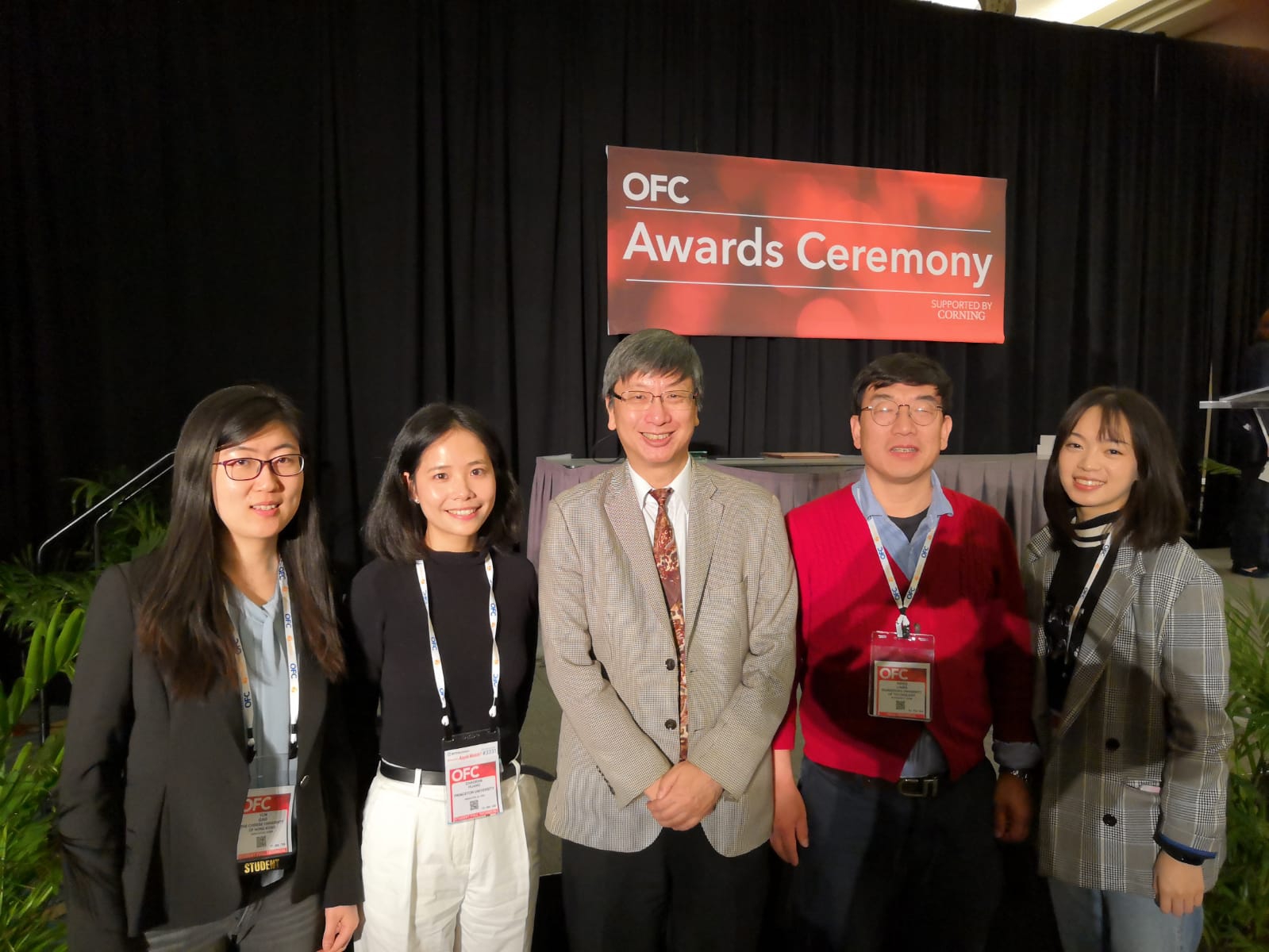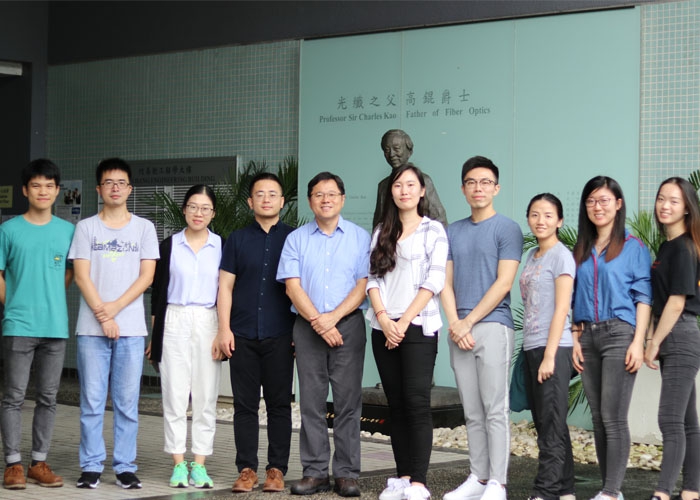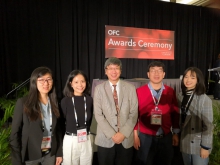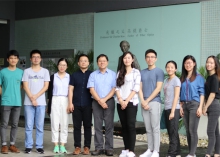CUHK
News Centre
CUHK Designs New Photodetector to Enhance High-Speed Optical Transmission to Meet the Tremendous Traffic Growth in Big Data Era
In the era of big data, the rapid increase in data traffic has aroused urgent demands for high-speed optical transmission. Ms. Gao Yun, a PhD student under the supervision of Professor Shu Ching-tat Chester at the Department of Electronic Engineering of The Chinese University of Hong Kong (CUHK), has published a paper in Optica recently, titled “High-speed Van der Waals heterostructure tunnelling photodiodes integrated on silicon nitride waveguides”. The research team has designed, fabricated, and characterised a new family of integrated waveguide photodetectors that promises exceptional benefits for applications in data centre interconnects and supercomputers. Also authors of the paper are Professor Tsang Hon-ki and Mr. Zhou Guodong from the same Department.
In recent years, optical interconnects have been proposed to alleviate the thermal bottleneck of the clock frequency in conventional electrical interconnects in CMOS (Complementary Metal-Oxide-Semiconductor) integrated circuits, to provide new levels of computational capability. At the receiver side of optical communication systems, photodetectors are used to convert optical signals back into electrical signals for further processing. Graphene photodetectors have previously demonstrated ultrafast response and broadband operation. However, due to the absence of an electrical bandgap in graphene, the photodetectors usually suffer from a huge dark current under a direct current bias. The dark current refers to the unwanted excess leakage current that occurs in the absence of light. It gives rise to detrimental noise in an optical receiver circuit.
To minimise the dark current of graphene photodetectors, the research team has demonstrated van der Waals heterostructure tunnelling photodiodes integrated on silicon nitride (Si3N4) waveguides. At the telecom wavelengths, a high on/off current ratio (over 10,000), a responsivity of 0.24 A/W, and a large bandwidth (56 GHz) have been experimentally achieved. The on/off current ratio has three orders of improvement when compared with previous graphene photodetectors. Si3N4 is more suitable for CMOS-compatible backend processing than silicon. The lower relative permittivity of Si3N4 also benefits a smaller device capacitance, which makes Si3N4 a better material underneath a high-speed device. This work provides a viable route towards high-bandwidth and high-sensitivity integrated photodetectors for data centre interconnects and supercomputers.
Ms. Gao Yun also received the prestigious “OSA/Corning Women in Optical Communications Scholarships” at the Optical Fiber Communication Conference and Exhibition (OFC) in San Diego, California, in March 2019 based on related research in graphene-based high-speed waveguide photodetectors.
Schematic of the van der Waals heterostructure tunnelling photodiodes integrated on Si3N4 waveguides.
Ms Gao Yun (1st left) receives the “OSA/Corning Women in Optical Communications Scholarships” at the Optical Fiber Communication Conference and Exhibition.







